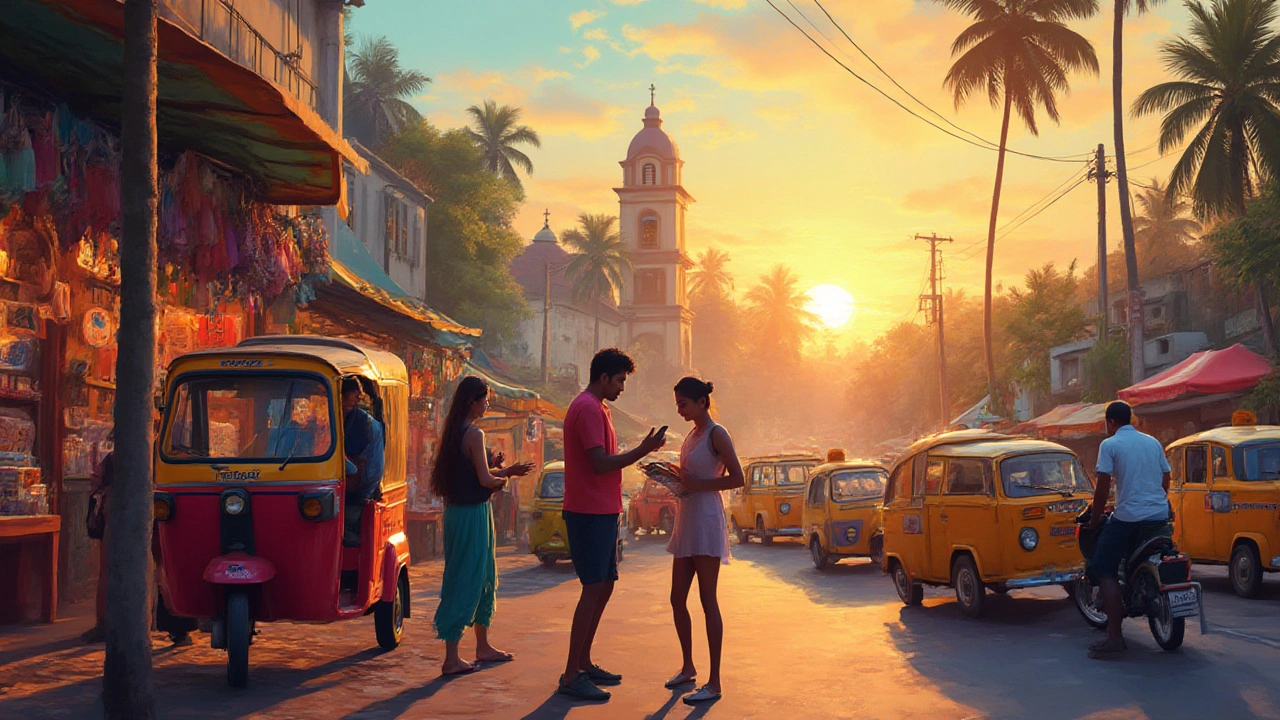SEARCH
How to Get Around Goa – Simple Transport Guide
If you’re landing in Goa, the first thing on your mind is probably how to see the beaches, markets, and nightspots without wasting time or money. Good news: Goa’s transport is cheap, varied, and pretty easy to figure out once you know the basics. Below you’ll find the most common ways to get around, how much they cost, and a few safety pointers to keep your trip smooth.
Public Buses and Trains
State‑run Kadamba buses cover almost every corner of the state. A short ride from Panaji to Calangute is usually under ₹30, and a longer trip to the southern tip at Palolem costs about ₹120. Buses are comfortable, have air‑conditioning on popular routes, and run from early morning until late night. If you’re traveling between major towns like Margao, Vasco or Panaji, look for the green‑and‑white Kadamba buses; they’re reliable and cheap.
Private bus operators also run frequent services, especially on the beach‑hopping corridor (Baga → Calangute → Anjuna → Vagator). These minibusses can be a bit cramped but they’re faster because they skip some stops. Always ask the driver for the fare before boarding – most will tell you immediately.
For longer distances, the Konkan Railway is a great option. Trains stop at Madgaon, Thivim, and Karmali, connecting Goa with major cities like Mumbai and Bangalore. A second‑class ticket from Mumbai to Madgaon is roughly ₹400, making it a cost‑effective way to start your Goa adventure. Book tickets online in advance, especially during the peak season (November‑February), to avoid sold‑out trains.
Scooters, Taxis and Ride‑Share
Renting a scooter is the most popular way to explore Goa’s coastline. Daily rates start at ₹300 for a basic 110cc bike and go up to ₹800 for a newer model with a windshield. You’ll need a valid driving licence (an International Driving Permit works) and a passport‑size photo for the rental agreement. Keep a helmet handy – it’s the law, and it saves you from fines.
If you prefer not to drive, auto‑rickshaws are everywhere in the towns. They charge a fixed rate for short hops (usually ₹30‑₹50) and can be negotiated for longer trips. For airport transfers or night rides, app‑based taxis like Uber and Ola are reliable. A 10‑km ride from Goa Airport to Calangute typically costs around ₹500, and the app gives you a fare estimate before you confirm.
Remember to ask for a meter on taxis or confirm the price with the driver before starting. Also, avoid traveling alone late at night on isolated roads – stick to well‑lit main streets or use a ride‑share service that tracks your trip.
For the eco‑friendly traveler, cycling is catching on in places like Old Goa and the Panjim waterfront. You can rent a bike for about ₹150 a day, and it’s a pleasant way to soak in the local vibe while staying fit.
Overall, mixing these options works best. Use buses for long‑distance hops, a scooter for day‑to‑day beach hopping, and a taxi or ride‑share when you’re carrying luggage or need a quick, safe ride at night. With a little planning, moving around Goa becomes a hassle‑free part of the fun.

Uber in Goa: The Real Guide to Rideshare, Cabs, and Getting Around (2025 Update)
Get the real scoop on using Uber in Goa in 2025. Discover app options, how locals and tourists get around, and the facts behind Goa's cab scene.
Continue reading